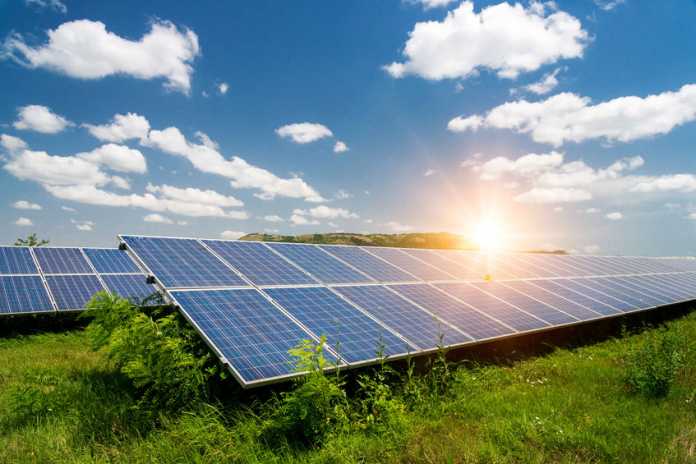By Tim Benson, Heartland Institute
Climate proponents cite solar power as the way forward to “save the climate”, but two reports released within weeks of each other document the unreliability problems the solar energy industry faces in 2021.
Released in late May, the 2021 Module Reliability Scorecard, an annual report from PV Evolution Labs (PVEL), found 26 percent of eligible manufacturers participating in this year’s PV Module Product Qualification Program (PQP) had at least one failure with their bills of material (BOM). Failures were up from 20 percent in 2020.
“One in three manufacturers tested experienced junction box failures versus one in five last year,” the Scorecard states. “The majority of these failures occurred during initial characterizations….[These] high junction box failure rates in the PQP are particularly concerning because most failures occurred out-of-the-box before testing. This suggests junction box quality and construction are frequently overlooked during the manufacturing process.”
“For three successive Scorecards,” the report continues, “PVEL has highlighted junction box failures as an increasingly common, yet preventable issue.”
The second report, kWh Analytics’ third-annual Solar Risk Assessment, found that operational solar assets were degrading by roughly 1 percent annually, double the degradation the industry had assumed would take place based on data from a 2016 National Renewable Energy Laboratory study. Median annual degradation for residential solar systems was placed at 1.09 percent, while non-residential systems saw annual degradation at 0.8 percent.
“Project underperformance continues to worsen,” the report notes. “This year’s contributions identify multiple causes of underperformance, including higher-than-expected degradation, terrain mis-modeling, and bankrupt manufacturers.” Further, the report warns, “the combination of chronic project underperformance and increasing operating leverage is elevating default risk for newly issued loans….Allowing these risks to go unchecked harms investment returns and ultimately damages the industry’s collective credibility.”
These reports are bad news for the movement to turn the entire electricity grid over to “renewable” energy sources like solar and wind, the expense of doing so has been detailed in earlier studies.
For example, an October 2020 report from T2 and Associates estimates the capital cost for delivering the current level of demand for electric power from an electric grid powered 100 percent from “renewable” sources like wind or solar power would be approximately $2.8 trillion.
A June 2019 analysis from Scottish consulting firm Wood Mackenzie estimates the cost of transitioning the United States to 100 percent renewable energy by 2030 would cost at least $4.5 trillion over that time period. That means a $35,000 cost to each household, around $1,750 per year for 20 years. Meanwhile, the American Action Forum estimated the costs of moving the entire country to 100 percent renewable sources would be $5.7 trillion, or $42,000 per household.
We can already see the cost effects of turning more and more of the American electricity grid over to wind and solar in the form of renewable energy mandates (REMs), also known as renewable portfolio standards. These mandates force utility companies to produce a certain percentage of their electricity from “renewable” sources by a certain date.
A 2020 working paper from the Energy Policy Institute at the University of Chicago showed REMs are dramatically increasing retail electricity prices. According to the study, seven years after REMs are enacted, renewables’ share of electricity generation increases by only 2.2 percent, and only 5 percent after 12 years, yet they raise retail electricity prices by 11 percent after seven years, producing roughly $30 billion annually in higher costs to consumers. After 12 years and a 5 percent increase in renewables’ share of generation, these prices rise by 17 percent.
Unsurprisingly, in states with REMs, energy rates are rising twice as fast as the national average and states with renewable mandates had electricity prices 29 percent higher than those without. The 30 states with renewable energy mandates (plus the District of Columbia) had average retail electricity prices of 12.31 cents per kilowatt hour (cents/kWh), according to the U.S. Energy Information Administration, nearly 17 percent higher than the U.S. average retail price of 10.54 cents/kWh. On the other hand, the 20 states without renewable mandates had average retail electricity prices of just 9.62 cents/kWh. Only one state without an REM, Alaska, had average retail electricity prices higher than the U.S. average.
Maybe it’s time legislators and energy commissioners rethink this unreliable and expensive technology.



















The short lead into this article on the home page says: Heartland Institute Climate proponents cite solar power as the way forward to “save the planet.”
Of course this is not the case, but the failure to separate the sentence starting with Climate from Heartland Institute makes it seem that the sentence should be read as above.